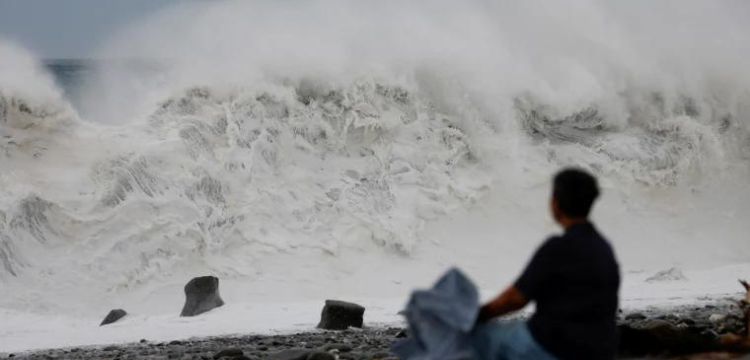[vc_row][vc_column][vc_column_text dp_text_size=”size-4″]
On Sunday, Hong Kong raised its second-highest storm warning signal as Typhoon Koinu approached the city, resulting in the closure of various transportation services and schools. The typhoon, which brought heavy rains and powerful gusts, arrived just a month after Typhoon Saola struck, prompting the highest “T10” storm alert.
A week following Typhoon Saola, Hong Kong experienced its most substantial rainfall in nearly 140 years, causing flooding in subway stations, malls, and landslides.
The Hong Kong Weather Observatory issued warnings of strong winds and intense rain bands as Typhoon Koinu moved towards the Pearl River Estuary, with its closest approach to the city expected to be within 70 kilometers (43 miles) before midnight.
Previously: China’s Red Alert: Torrential Rain Warning for Beijing
During the day, Typhoon Koinu was classified as a “T8” signal, the second-highest warning level in Hong Kong’s system. This level is activated when a storm’s maximum sustained wind speed reaches 117 kilometers per hour, while Koinu’s maximum sustained wind speed reached 145 kilometers per hour.
At 7 pm (1100 GMT), the Weather Observatory raised the warning signal to “T9,” indicating a significant expected increase in wind strength. Residents were advised to remain indoors and away from exposed windows and doors, ensuring they had a safe shelter.
Schools, daycare centers, cargo terminals, ferries, and buses suspended their operations for the day or the afternoon. Additionally, approximately 90 flights were canceled, and 130 others were delayed throughout the day due to the storm, according to Hong Kong’s Airport Authority.
During the typhoon on Sunday afternoon, Hong Kong’s government received reports of 11 fallen trees and six injured individuals. The Hong Kong Observatory cautioned the public to avoid low-lying areas in case of a storm surge and stated that they would assess the need for higher storm warning signals based on wind speeds.
Prior to reaching Hong Kong, Typhoon Koinu had brushed by Taiwan, bringing torrential rain and record-breaking winds to Orchid Island, resulting in at least one fatality and widespread power outages.
Southern China frequently experiences typhoons during the summer and autumn months, originating in the warm waters east of the Philippines and traveling west. However, climate change has made tropical storms more unpredictable and intensified their impact, leading to increased rainfall, stronger gusts, flash floods, and coastal damage, according to experts.
[/vc_column_text][/vc_column][/vc_row]











